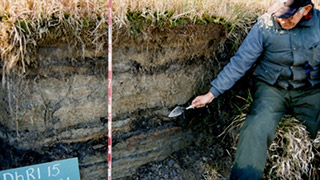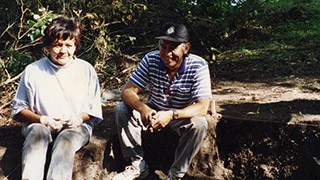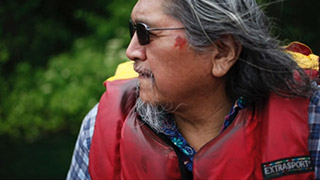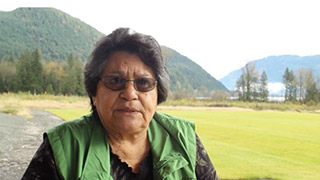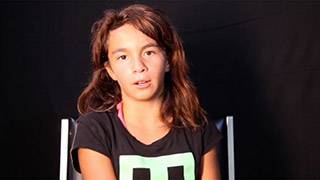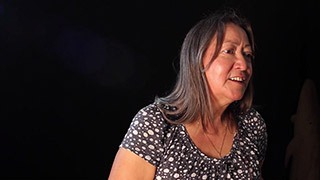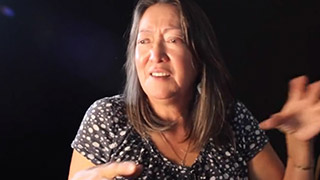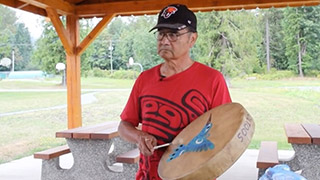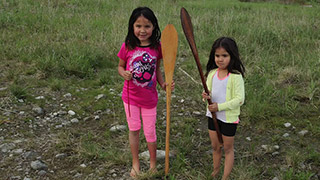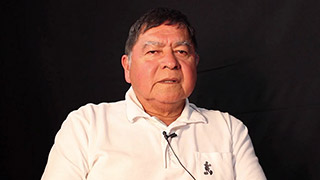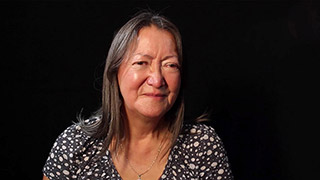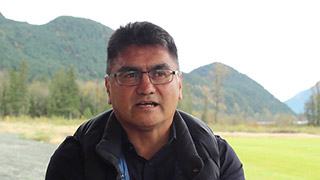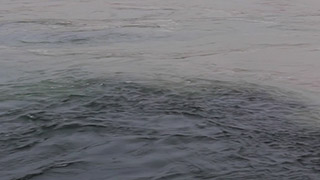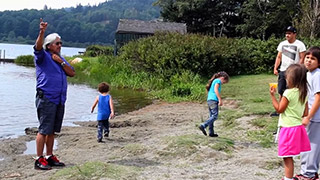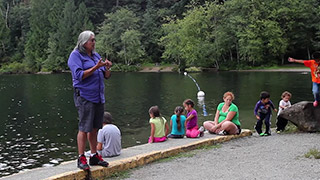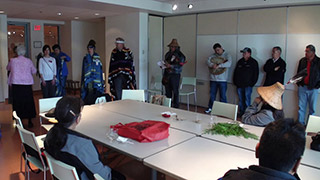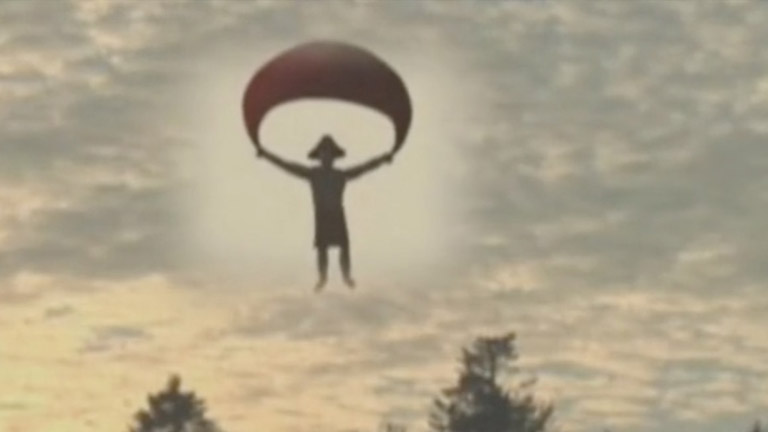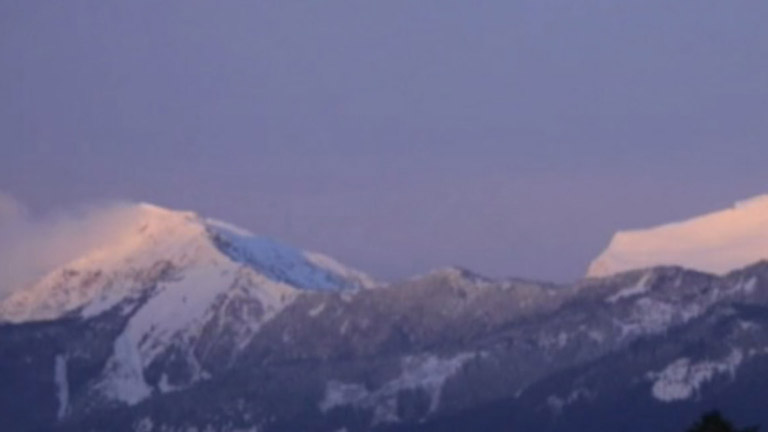Taking Care of Ancestors: Fieldwork Protocols
Taking Care of Ancestors: Fieldwork Protocols
View Transcript[Betty Charlie]: They had to have good feelings when they went over there, and the way they went over there was the way they had to come back. Not bringing bad thoughts back from the mountains. Yeah, it’s all about respect.
[Dave Schaepe]: In 1992, and following particularly with regard to the work that was done focusing on the burial mound sites, and the burial mound features, that’s when protocol emerged, again as I understand it,and the use of témélh - the red ochre - as one of the significant parts of cultural protocols that have continued to be used to this day, particularly with field work involving excavations on sites. We as archaeologists are disturbers. We do disturbance, we create disturbance to sites. We disturb them. We take things away. We take things that don’t belong to us, from the Stó:lō perspective. That’s part of what we do. What we do in that happening can be justified in particular instances where there’s questions to be answered, that archaeologists can address; only archaeologists, in some cases, can really address those particular questions, given our work in the earth with objects. In order to counteract the disturbance, in order to not interfere or avoid harmful interactions with the community at large, and that’s the spiritual realm of ancestral community who, from a Stó:lō perspective, still is there, is still in these places, still inhabits the old village sites, are still connected to their things - the things that belong to them; their objects, their creations.
[Albert (Sonny) McHalsie]: When you leave too, call your name. So when we leave our cemeteries, we always call ourselves so we don’t leave. ‘Cause when you go to a cemetery, and you’re grieving for your loved ones, sometimes you can leave some of your spirit there. So that’s why we brush - so when we brush, we’re brushing anything bad, something that might have just latched on to you, so we’re brushing it off. But also when you call yourself, it’s making sure that you yourself don’t leave something there. So when you’re leaving just go, “Let’s go, Doug” - just say it in your head. “Come on Doug, let’s go.”
[Michael Blake]: Well, one of the protocols that became very important right at the beginning was that, because we were on a cemetery site, there was some potential for spiritual danger to all of the people who were working on the site. And, in order to protect all of the participants in the project, we were taught how to use témélh - red ochre, or Hematite, that’s turned into a red paint that we could use to mark our foreheads, and our chest, and our wrists, so that we would become visible to the spirits at the site.
[Betty Charlie]: It was for our protection, mostly for the people that are buried on this site. So, they’d see the témélh, and they’d know you were coming. And, so they could identify you, and it was also so while you were there, if you happened to pick up something like an old artifact that, something off of the artifact wasn’t going to jump on you. And then you’d have to take that back. It was for protection.
[Vi Pennier]: What I know of témélh is that it’s strong medicine. It’s a protector. It’s a healer.
[Lucille Hall]: I was just told that, it was to protect you, from spirits, and I was told that the spirits on the other side recognize you if you’re wearing the témélh. Otherwise, if you’re not wearing it, they can’t see you; they don’t know who you are. But once it’s in place, it doesn’t matter who you are; they know who you are. They recognize you. So it’s very important to wear it. Doesn’t matter who you are. You know - they recognize you. And that’s nice. You know, that’s something to be said about the spirits. So témélh is just - I’m very proud to wear it when I can. You want to be recognized. You want them to see you, even if it’s just for a brief moment. Yeah.
[Dave Schaepe]: In large part, with the ancestral community, the practice of burnings, spiritual burnings, offering, feeding the ancestors; these are practices that go back likely thousands of years, in that we’re seeing, in the work we’re doing in archaeology, we think particularly in relationship to the burial mounds, one way in which we see practices like this occurring in the past that continue to be used today in the community, and now are incorporated into our archaeological work. This project is overall about increasing the visibility of the relationships between you know, what’s otherwise an “us” and “them” kind of relationship, to be able to work together without harm coming to either of the parties, any of the parties.
So archaeologists applying témélh before they go on site, being instructed by the elders and by cultural workers, how to approach our work with a good mind. To be of good mind, to be of good heart, to leave your negativity behind. To do our work on site in the best possible way and to avoid conflict on site.
[Michael Blake]: Um, one of the conferences that took place was with elder Frank Malloway. And he and other elders, along with other community members at Sq'éwlets thought that it was really worthwhile excavating the mounds to the point where we could demonstrate that they were part of the Sq'éwlets cemetery. And that they were burial mounds, and not just constructions of earth. So then we did that. We proceeded to go ahead and excavate the centres of the mounds, following the instructions of the elders, and following the protocol that they developed for how we would go about doing it, and how the whole process should unfold. That was a really, really useful experience because we couldn’t have, we wouldn’t have known how to proceed within the community protocols without that kind of support from and advice and guidance from the elders in the community. It was absolutely essential to every part of the decisions about how we went ahead with what we did.
Download:
SD (40 MB) | HD (129 MB)



